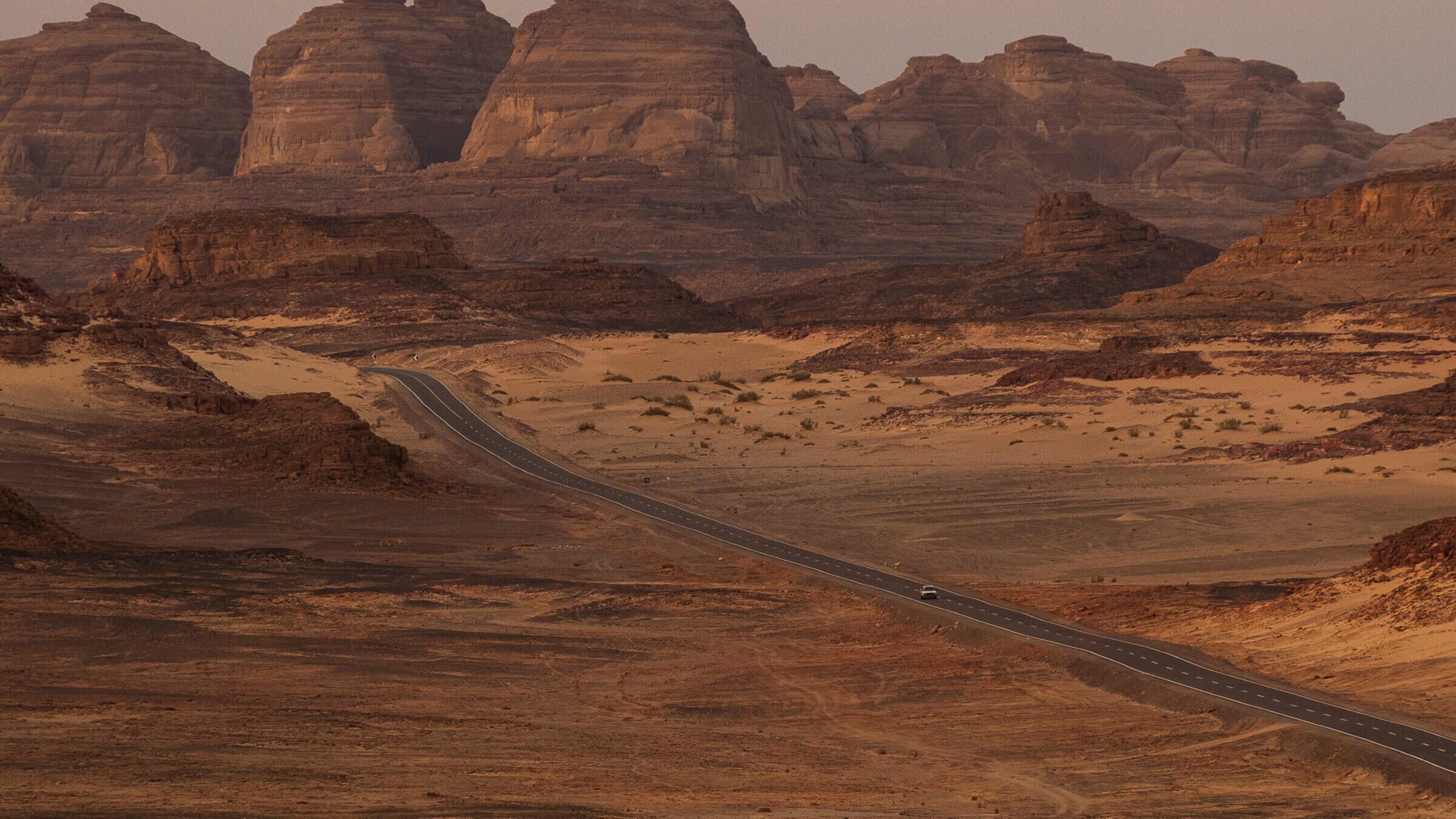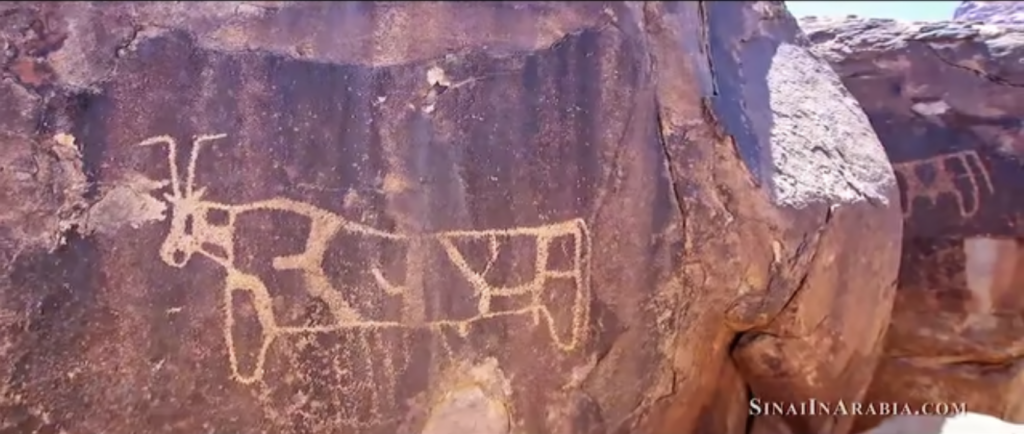Some people think Mount Sinai is in Saudi Arabia. Does it matter?
Evangelical tourism is booming in Saudi Arabia, all to see where God maybe spoke to Moses

A shot of the area near the traditional site of Mount Sinai, in Egypt. Courtesy of Getty Images
Moses received the Ten Commandments on Mount Sinai before the wandering Israelites entered the promised land of Israel after fleeing Egypt, according to the Bible. So one might assume that said mountain is in Sinai, the peninsula between Egypt and Israel. In fact, most people do.
But some evangelicals think otherwise — they think the holy site is in Saudi Arabia.
Saudi Arabia only opened to mainstream tourists in 2019, before which most visitors were there for the Hajj, the Muslim pilgrimage to Mecca. No one expected a boom of Christians — perhaps because no one really thought Saudi Arabia contained any biblical holy sites. Most biblical scholars agree that Mount Sinai is in the Sinai Peninsula, though there is disagreement as to exactly which peak it might be.
It doesn’t help that Saudi Arabia prohibits the public practice of any religion other than Islam, though a 2022 State Department report indicates that enforcement has relaxed significantly in recent years.
Yet according to a New York Times report, Christian tourism in Saudi Arabia is booming, all visiting this new proposed Mount Sinai.
But why does anyone think Mount Sinai is in Saudi Arabia — and why does it matter so much?
The impact of religion on the Middle East is hard to dispute; biblically based tourism boosts the economies of countries including Israel and Egypt, while religious beliefs drive territory disputes, geopolitics and riots throughout the region.
Proving the location of various biblical events doesn’t just impact international politics, however; it’s also core to some people’s religious beliefs.
One YouTube video offering proof for the Saudi Arabia location summarizes the issue neatly in its introduction. “For generations we’ve been taught that we had to believe in the story of Exodus on faith alone,” a narrator intones, noting a dearth of evidence indicating Moses and the Israelites’ presence in the Sinai peninsula. “There’s practically nothing to validate one of the most important stories in the bible.”

“Or,” the video continues, “have we just been looking in the wrong place?”
The 20-minute, documentary-style video comes from the Doubting Thomas Research Foundation, a nonprofit devoted to “investigating the historicity of biblical accounts.” The video description links to a weeklong tour to Saudi Arabia led by Ryan Mauro, the organization’s president and the film’s narrator, as well as a Fox News commentator; the tour costs $4,000 per person.
It, and similar tours and expeditions, speak to a desire for biblical literalism and a religion that is tangible and proven.
Biblical events and their locations are nearly impossible to prove, though, thanks to limited archaeological evidence and shifting borders throughout history. And the Bible is not a purely historical document — at least not according to most academics — which complicates attempts to find specific locations from its stories. Instead, scholars tend to use the text as a starting point to gain insight into events and cultures from the time. For example, based on the biblical text and, importantly, other historical records, most scholars believe there was an exodus of enslaved Israelites from Egypt. But it’s impossible — and not the purview of historians — to verify stories like Moses receiving the Ten Commandments, much less pinpoint the peak on which he spoke to God.
But that doesn’t stop people from trying.
The evidence for the Saudi Arabia Mount Sinai largely consists of: a mountain in the area roughly matching the biblical description — which many other mountains also do — black rocks that believers think are proof of God’s fiery descent from heaven, some undated signs of life and religious worship around the area and, most importantly, some petroglyphs of cows. These etchings in a rock at the foot of the mountain, promoters of this theory say, are proof of the Israelites worshiping the famous golden calf, undiscovered for so long because, the video alleges, the Saudi government has long tried to conceal it. (Other scholars vigorously contest this allegation.) The YouTube film also repeatedly emphasizes that locals told them that this is Mount Sinai and that Moses was there.
But that’s true for many other areas too. One mountain in the Sinai peninsula, Jabal Musa — which translates to “Mount Moses” — has been traditionally considered the location of Moses’ revelation from God since the first century, and there’s tons of tradition around it, including a Greek Orthodox monastery, St. Catherine’s, which sits at its foot, as well as various sacred sites for Judaism, Christianity and Islam along the route to the summit. Similarly, at Petra, in modern-day Jordan, there’s a peak considered by locals to be the biblical Mount Sinai; the modern town, outside the archaeological site, is called Wadi Musa, or “Valley of Moses.”
It’s easy enough to debunk or prove any claim about Mount Sinai. The Saudi Sinai camp argues that the lack of archaeological evidence in the Sinai peninsula suggests the Israelites were never there, and some readings of the text imply that Moses was in Midian, which is believed to have been in “Arabia.” Detractors point out that Arabia of the time was a huge area, and the Saudi peak is too far for the Israelites to have traveled to it in the short period the biblical text gives. And the Saudi theory was first suggested in 1984 by Ron Wyatt, a nurse whose amateur archaeological theories, including a supposed discovery of Noah’s Ark in Turkey, have been widely discredited.
The debate around which mountain is the real Mount Sinai has been going on for decades if not centuries, and it seems unlikely to end any time soon. Perhaps that’s why, unlike Jerusalem, Mecca or the Mount of Olives, Mount Sinai has never become a major pilgrimage destination. (Jews, unlike Christians, do not seem particularly invested in the debate or in visiting any of the Sinai candidates.)
Really, these theories are mostly conjecture; after all, no one knows if any of it really happened at all. Which Mount Sinai you believe in is still, well, largely a belief. Evangelical tourists might be flocking to find evidence of God, but at the end of the day, religious belief still requires faith.






















